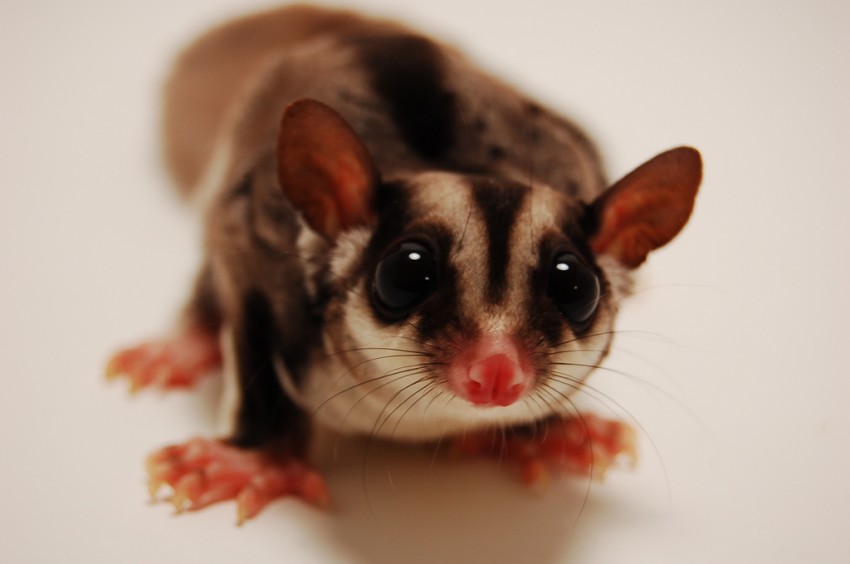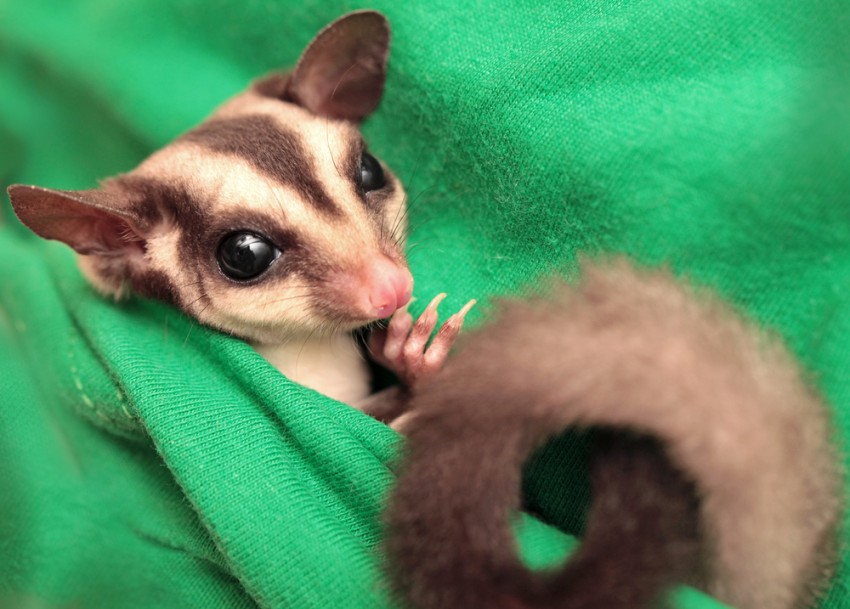
A sugar glider might be your perfect pet if you can’t have a cat or dog, but you fancy something more interactive than a stick insect or a pet tarantula.
These tiny marsupials, native to the forests of New Guinea, Indonesia and Australia, grow to about the size of your hand.
Generally healthy, sturdy little critters, sugar gliders tend to have few medical problems.
How long do sugar gliders live? Their lifespan is as long as 14 years in captivity.
Sugar Glider Controversy
The controversy of whether sugar gliders should be kept as pets has been going on for years.
Part of the problem is that many are illegally taken from their natural habitats and sold on the black market for pet trade.
Animals that have been taken from the wild and sold to unsuspecting people as pets are often problematic.
Do Sugar Gliders Make Good Pets?
All things considered, yes, a sugar glider could be a good pet for you — but they are not as low-maintenance as hamsters or gerbils.
A sugar glider will require almost as much care as a cat would.
Not only will you need to feed your glider, but you will also probably spend good money creating a suitable habitat for a sugar gliders (see our advice below). These are social creatures, and they need companionship.
Because they live in colonies, sugar gliders should not be alone. Give your glider a buddy. Same-sex gliders make the best pairs and groups, because males will become aggressive and territorial if females are part of the group.
Sugar gliders are considered rare and exotic animals in the United States, so they are not legal in every state.

Sugar Glider: A Playful Pet
Curious, intelligent and active, sugar gliders love to play with people.
They bond deeply and enjoy spending time with you by engaging in fun activities. If you want to take your well-socialized buddies on outings, they love to cuddle in a warm pocket.
They’ll also climb just about any vertical surface — just so they can jump down in their trademark “glide” position, which almost looks like flying.
They also like to explore, so supervise their activities and keep track of them.
In the video below, exotic pet enthusiast Meghan Arriola explains why she thinks sugar gliders do NOT make good pets:
What to Feed Your Sugar Glider
What do sugar gliders eat? They eat vegetables, fruits, protein, insects and a host of common household foods, such as scrambled eggs, yogurt, nuts and fruit juice.
You can also find formulated sugar glider food online.
Place several feeding stations in your sugar glider’s cage and make sure to freshen up the drinking water often.
Sugar gliders are competitive when it comes to their food, so having numerous feeding stations will eliminate potential problems among cage mates.
Sugar Glider: Preferred Habitats
Sugar gliders need a habitat that will be healthy and interesting to them, especially if they were once out in the wild.
Please take care in creating the perfect environment for your new pet. Keep the following advice in mind.
Sugar Glider Cage Size
Many people think that just because a sugar glider is a tiny creature that they can keep it in a cage that people use for hamsters or gerbils. However, a sugar glider must have room to keep itself busy and move around freely.
- The smallest acceptable habitat size for a sugar glider is 2 feet wide by 2 feet deep by 3 feet high. Again, that’s the minimum. A sugar glider will be happier and much less troublesome in an even larger area — so if your home permits, get a bigger habitat.
- The bars on a sugar glider habitat must be no wider than 1/2 inch apart. Why? Because these animals can squeeze their way out of small places.
- Never use an uncoated wire mesh on a sugar glider cage. Their claws can get stuck in the mesh and cause serious injury.
Where to Place Your Sugar Glider Habitat
- Sugar gliders are nocturnal animals, so place the habitat out of the sunlight.
- Keep the habitat in an area that is quiet.
- Consider placing it up high on a shelf or a tall table.
Sugar Glider Bedding
Sugar gliders make their beds in hollow logs when they live in the wild. It’s best if you can give yours a similar place to sleep.
How to do this? Just buy a bird’s nesting box at your local pet shop.
Room to Jump and Climb
It’s important for the health and happiness of your sugar gliders that they have the ability to jump and climb around their habitat.
They will want to jump from tree limbs and climb all over the place. So go to the pet store and buy some pieces to add to the habitat that will encourage them to exercise.
What Kinds of Toys Do Sugar Gliders Like?
As mentioned, sugar gliders need to be active. They will require lots of toys to keep them occupied.
Although toys specifically made for gliders are hard to come across, toys designed for large hookbill birds will keep them busy.
Sugar gliders enjoy swings and even heavy-duty rope toys, too.



